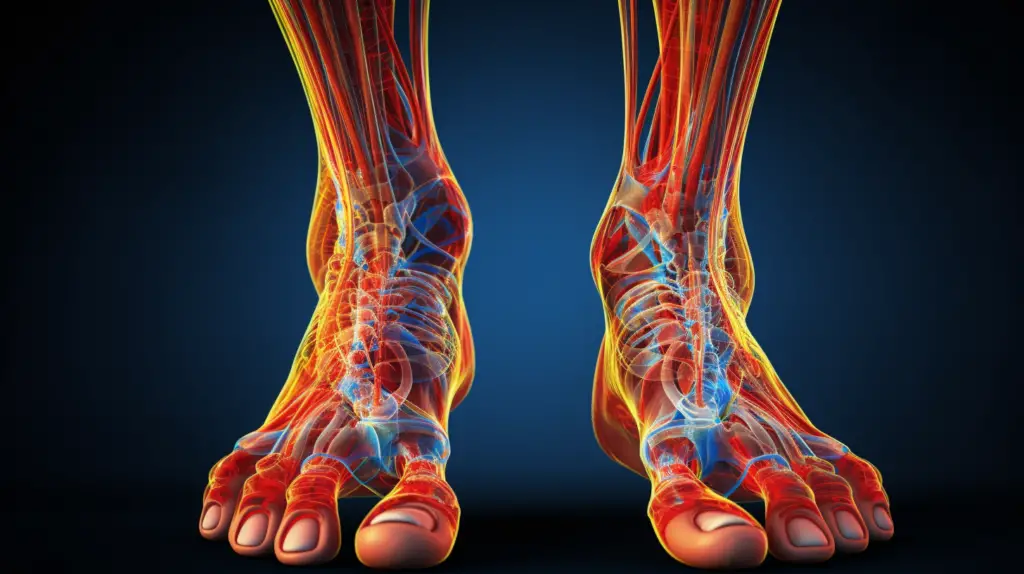Foot conditions, often brushed aside as minor inconveniences, can wield a surprising amount of power over an individual’s overall well-being. Many of us don’t realize the intricate nature of our feet, comprised of a delicate balance of bones, muscles, tendons, and ligaments that bear the full weight of our body. When this intricate system experiences abnormalities or injuries, the resulting pain can be debilitating. Simple tasks like standing, walking, or even wearing shoes can become excruciating, turning everyday routines into challenges.
Beyond the immediate physical discomfort, the impact of foot conditions on one’s quality of life can be profound. Chronic foot pain can lead to reduced mobility, limiting participation in activities or hobbies once loved. This curtailment can further result in social isolation, feelings of frustration, or even depression. Also, a persistent foot problem may cause an individual to adopt an altered gait, potentially leading to issues in the knees, hips, or back. Thus, what begins as a localized issue in the foot can ripple out, affecting the broader tapestry of a person’s physical and emotional health.
Here’s a list of some common and less common foot medical conditions that cause pain:
- Plantar Fasciitis: Inflammation of the band of tissue that runs from the heel bone to the toes, often causing heel pain.
- Bunions: A bony bump that forms on the joint at the base of the big toe.
- Hammer Toe: A deformity where a toe has an abnormal bend in the middle joint.
- Ingrown Toenail: A condition where the edge of the toenail grows into the skin of the toe.
- Morton’s Neuroma: A painful condition that affects the ball of the foot, often between the third and fourth toes.
- Achilles Tendinitis: Inflammation of the Achilles tendon, which connects the calf muscles to the heel bone.
- Gout: A form of arthritis that can cause sudden and severe pain, often in the big toe.
- Athlete’s Foot: A fungal infection that can cause itching, burning, and cracked skin.
- Corns and Calluses: Thickened areas of skin caused by repeated pressure or friction.
- Flat Feet (Fallen Arches): The arches of the feet are flattened, allowing the entire sole of the foot to touch the ground.
READ MORE: 25 Facts about Lyme Disease | All You Need To Know - Claw Toe: A condition where the toe bends and appears like a bird’s claw.
- Tarsal Tunnel Syndrome: Compression of the nerve that travels through the tarsal tunnel, resulting in pain.
- Heel Spurs: Calcium deposits forming a bony protrusion on the underside of the heel bone.
- Metatarsalgia: Pain and inflammation in the ball of the foot.
- Hallux Rigidus: Stiffness and arthritis in the big toe.
- Diabetic Foot Ulcers: Open sores or wounds that occur in people with diabetes.
- Plantar Warts: Warts on the soles of the feet caused by the human papillomavirus (HPV).
- Charcot Foot: A condition where the bones of the foot become weakened and can fracture or disintegrate.
- Sesamoiditis: Inflammation of the sesamoid bones under the big toe.
- Jones Fracture: A fracture in the fifth metatarsal of the foot.
READ MORE: The Paradox of Hydration: Can You Die From Drinking Too Much Water? - Stress Fractures: Tiny cracks in a bone, often caused by repetitive force or overuse.
- Lisfranc Injury: An injury to the bones or ligaments in the middle part of the foot.
- Ganglion Cyst: A non-cancerous lump filled with a jelly-like fluid.
- Posterior Tibial Tendon Dysfunction (PTTD): An inflammation or tear of the posterior tibial tendon in the foot.
READ MORE: 25 Facts About the Gianotti–Crosti Syndrome: All You Need to Know
Addressing foot conditions promptly and seeking expert guidance is not just a matter of physical relief but a proactive step towards safeguarding one’s overall well-being. Left unchecked, these conditions can evolve into more complex problems, affecting not only the feet but the entire biomechanical structure of the body. By consulting qualified professionals early on, individuals can access tailored treatments and preventive measures that not only alleviate current discomfort but also avert potential complications. Prioritizing foot health is, therefore, a testament to the adage that timely intervention is the cornerstone of long-term health and optimal life quality.
It’s important to note that if someone is experiencing foot pain or any unusual symptoms, they should consult a podiatrist or another appropriate medical professional for an accurate diagnosis and treatment.


